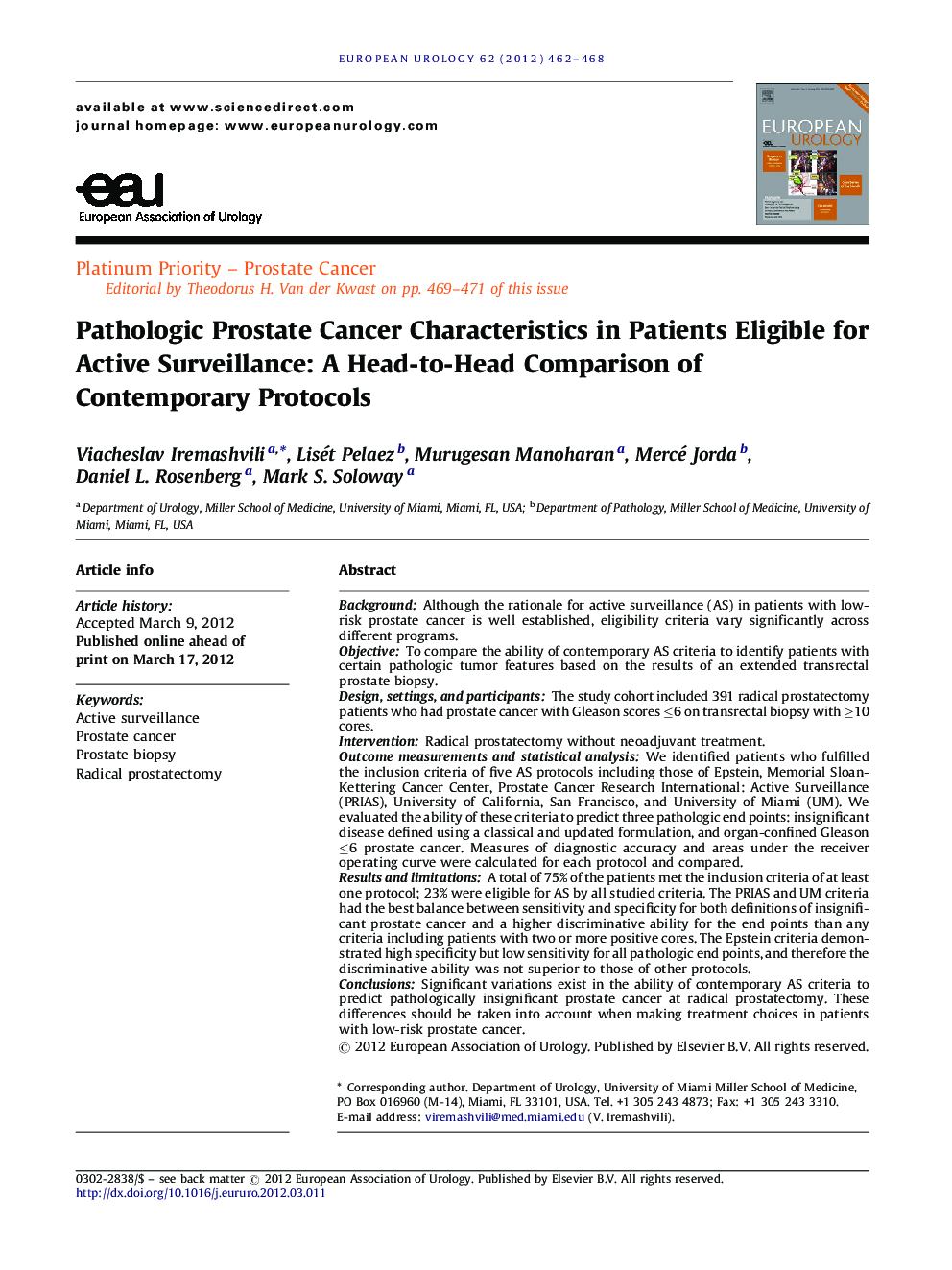| کد مقاله | کد نشریه | سال انتشار | مقاله انگلیسی | نسخه تمام متن |
|---|---|---|---|---|
| 3922781 | 1252983 | 2012 | 7 صفحه PDF | دانلود رایگان |

BackgroundAlthough the rationale for active surveillance (AS) in patients with low-risk prostate cancer is well established, eligibility criteria vary significantly across different programs.ObjectiveTo compare the ability of contemporary AS criteria to identify patients with certain pathologic tumor features based on the results of an extended transrectal prostate biopsy.Design, settings, and participantsThe study cohort included 391 radical prostatectomy patients who had prostate cancer with Gleason scores ≤6 on transrectal biopsy with ≥10 cores.InterventionRadical prostatectomy without neoadjuvant treatment.Outcome measurements and statistical analysisWe identified patients who fulfilled the inclusion criteria of five AS protocols including those of Epstein, Memorial Sloan-Kettering Cancer Center, Prostate Cancer Research International: Active Surveillance (PRIAS), University of California, San Francisco, and University of Miami (UM). We evaluated the ability of these criteria to predict three pathologic end points: insignificant disease defined using a classical and updated formulation, and organ-confined Gleason ≤6 prostate cancer. Measures of diagnostic accuracy and areas under the receiver operating curve were calculated for each protocol and compared.Results and limitationsA total of 75% of the patients met the inclusion criteria of at least one protocol; 23% were eligible for AS by all studied criteria. The PRIAS and UM criteria had the best balance between sensitivity and specificity for both definitions of insignificant prostate cancer and a higher discriminative ability for the end points than any criteria including patients with two or more positive cores. The Epstein criteria demonstrated high specificity but low sensitivity for all pathologic end points, and therefore the discriminative ability was not superior to those of other protocols.ConclusionsSignificant variations exist in the ability of contemporary AS criteria to predict pathologically insignificant prostate cancer at radical prostatectomy. These differences should be taken into account when making treatment choices in patients with low-risk prostate cancer.
Journal: European Urology - Volume 62, Issue 3, September 2012, Pages 462–468